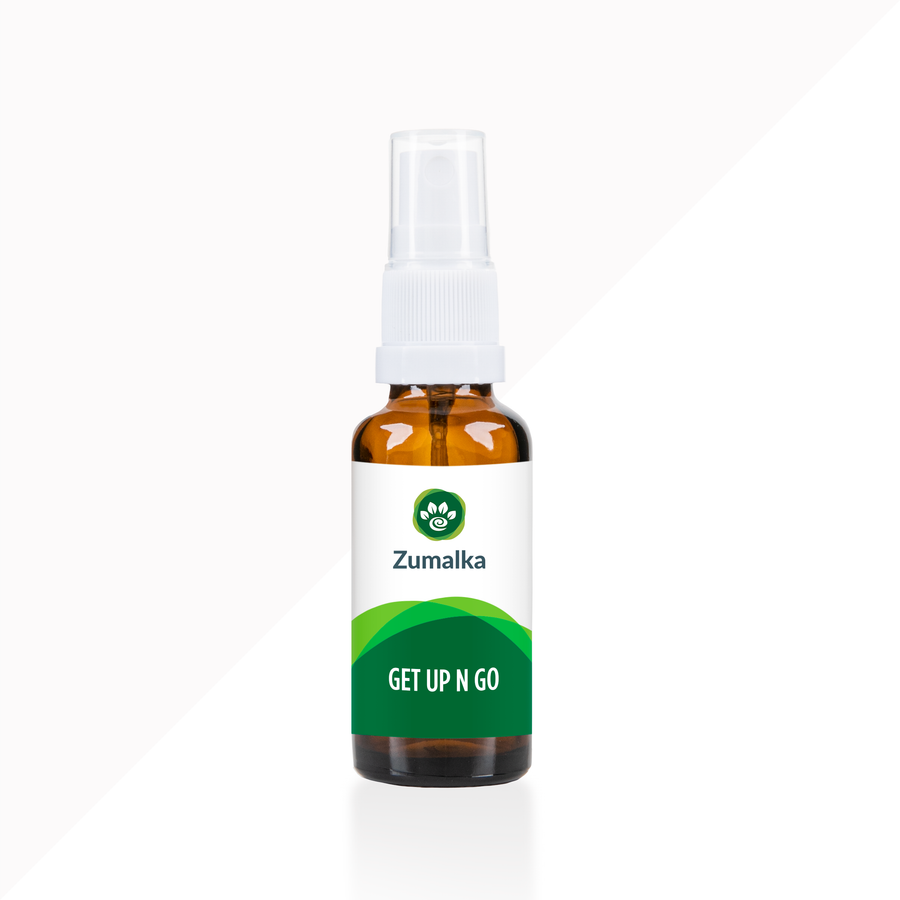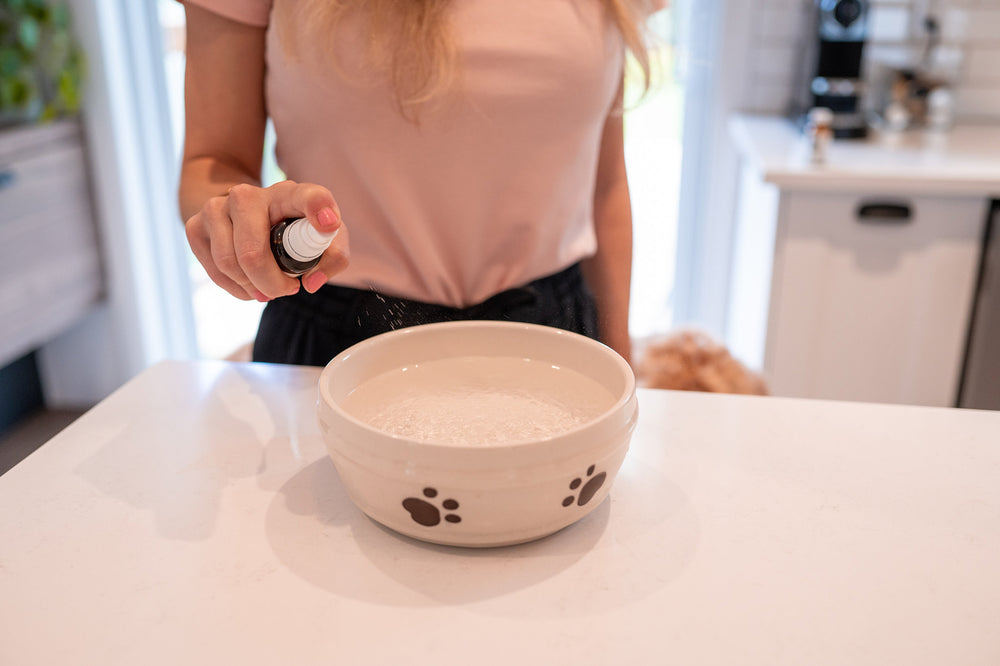The 6 Best Natural Pain Reliefs for Your Cat
As a kitty parent, having natural pain relief for cats should be an essential part of your home pet care checklist. Knowing how to properly deal with your cat's pain not only helps keep the discomfort in check but also prevents the whole thing from becoming worse sooner or later.
We've put together this blog post to get you in on the best natural pain relief options you can go for when your cat is in pain. Besides walking you through the common symptoms of pain in cats, we will also share some home pain relief tips that you will find useful.
Why don't we start things off by taking a look at the signs that indicate your cat is in pain?
Common Signs of Pain in Cats

There are indicators that your cat's body will exhibit when it comes to the presence of a pain sensation. These can also vary depending on whether it's just a moderate discomfort or extreme pain.
Below you will find the common symptoms that your cat is experiencing pain:
1. Increased vocalization
Many cats tend to become more vocal when their bodies have painful areas. Pet parents should also remember that if your kitty's vocalization gets more pronounced and louder, chances are the pain he's going through is more intense.
2. Sudden changes in body movement and posture
Arthritis pain can disrupt your cat's usual movements. Some types of joint pain can also be so intense for your pet that he will take on a new—albeit awkward and uncomfortable—posture almost immediately or as time goes by.
It is important to remember that not having the right pain management in this situation may lead to more issues like disrupted blood flow and severe inflammation.
3. Infrequency or lack of grooming
If you're anything like most pet parents, you probably already know that grooming is one of the activities your kitty engages in every day. However, when a cat's body is going through pain, he won't be that eager to groom himself anytime soon due to the discomfort he is experiencing.
4. Lack of interest in play and decreased activity
Your pet's daily routine will drastically change if his body is constantly subjected to acute or chronic pain. Besides hiding and skulking most of the time, a cat will also deliberately avoid activities that he used to be excited about like play and exercise.
5. Not using the litter box
Unlike what many pet parents mistakenly think, issues with litter box usage can also stem from the lack of pain control in cats. One example of this is when your kitty is suffering from a kidney disease or urinary tract infection.
Your cat will eventually associate the usage of the litter box with the pain he is going through and avoid the same altogether. The same applies to recurring digestive issues like bloating and stomach upsets.
6. Sudden irritability and moodiness
Your pet's health is not just affected physically when a cat's pain is involved. His mental wellness will also be disrupted in one way or another. Your kitty may even become more vulnerable to issues like increased levels of stress and anxiety in this situation.
Feline Chronic Pain vs. Acute Pain in Cats

We'd just like to stress as early as now that pain in cats may be classified into two (2) categories: acute and chronic. We will explain this more in detail below:
What is acute pain in cats?
The term "acute pain" basically means a type of pain that is both intense and sudden. It generally occurs without a known cause and disappears quickly. However, it may be the result of trauma or a sign of possible inflammation in some cases.
What is chronic pain in cats?
On the other hand, "chronic pain" refers to a type of pain in cats that is persistent and varies in intensity. It may start out as rather dull and insignificant but will progress in severity as time goes by. Pain that does not go away after three (3) to four (4) months can already be categorized as chronic.
What Causes Your Cat Pain?

There are a lot of possible factors why your cat is in pain. It is even likely that there's more than one pain "trigger" that is setting off your pet's discomfort. For this part of our discussion, we will go over the most common reasons why your feline best friend is experiencing pain:
Old age
Several physiological and mental changes are simultaneously going on inside a cat's body when he has already reached the senior citizen equivalent in felines.
Unfortunately, some of these changes can potentially result in pain sensations like irritated nerves, poor blood circulation, a sensitive area or two, as well as future inflammation in specific points of the body, such as the ankles, knees, and hips.
Moreover, some functions of the body that naturally reduce inflammation may also be weakened or even become impaired during this time. Fish oil is one of the natural options that you can use for this problem.
Underlying health conditions
Another possible factor why your cat is in pain is the presence of an underlying health issue. This can be anything from the lack or very low levels of joint fluid, or nerve problems. kidney damage, inflammations, parasitic infestation, as well as abscesses, among others.
While we advocate for the use of natural remedies when it comes to pain management in cats, administering emergency veterinary medicine is required in extreme situations. Make sure you thoroughly follow your vet's treatment plan, too.
It is crucial to keep in mind that your pet is prone to an increased risk of even more serious health problems if these underlying wellness issues are ignored.
Injury or effects of the same
What's really alarming about injury in cats is that they can cause acute pain immediately and may give rise to their chronic counterparts sooner or later if the same is not dealt with the right way. It is crucial to keep in mind that even the slightest nicks, cuts, and similar cat injuries should not be ignored.
This is because they can set off issues like nerve pain, "on and off" discomfort that resembles being pricked with small needles, as well as bouts of swelling and inflammation. This is one of the most common sources of pain in cats.
Other possible reasons
Although this may sound surprising, there are some rather odd reasons why your feline companion is in pain. It could be some digestive reaction due to some changes in your cat's food or cat's diet, chafing between the thighs because of overexercising, or an adverse reaction to conventional pain medication.
This is one advantage when it comes to using natural remedies as regards pain relief. Apart from easing pain and discomfort, home remedies can also provide other benefits like reducing inflammation, supporting mobility, maintaining ideal immune system health, and reducing swelling.
Is There a Natural Pain Relief for Cats?

The short answer is yes.
It is noteworthy that conventional options like pills, laser therapy, and similar procedures aren't just your only recourse when cat pain is concerned. There are a lot of pet parents who have found success in going for natural remedies when pain relief is concerned.
Apart from having natural anti-inflammatory properties and pain control ability without adverse side effects, these remedies can also be easily integrated in your cat's diet for no-fuss administration.
As we've emphasized at the beginning of this blog post, we're going to help you zero in on natural pain relievers the next time your cat's body is experiencing pain.
Make sure you keep on reading because we're going to touch on what these home pain medications are in just a bit.
Why You Should NEVER Give Your Cat Tylenol (Acetaminophen)

Tylenol is no doubt one of the most popular conventional pain medications available these days.
This medicine is also referred to as acetaminophen and its active ingredient is N-acetyl-para-aminophenol (APAP), which is also known as paracetamol.
While Tylenol reduces inflammation in humans and may help us become pain-free, it is actually fatal to your cat even in small doses. We'd just like to stress that this is a very dangerous option to go for when your pet is going through pain.
Conventional pain medications can set off adverse health conditions in cats like acetaminophen poisoning
As soon as it is ingested by your cat, Tylenol or acetaminophen basically sets off damage to the liver and triggers subtle changes in the circulatory system that can potentially result in fatal consequences before you know it.
While acetaminophen-based medicines like Tylenol increase blood flow, it also prevents the red blood cells from transporting oxygen.
This serious health issue is called "acetaminophen poisoning" and its symptoms include abnormal heart rate, labored breathing, pale gums, swelling in the paws and face, as well as sudden disorientation.
It is very important to take note that acetaminophen poisoning can take place within four (4) to twelve (12) hours of ingesting Tylenol and may lead to death if not immediately and properly dealt with. Regardless of the situation, we'd just like to stress that you should never give this conventional medicine to your cat.
Additionally, certain vitamins like Vitamin D3 found in most products designed for humans can be also dangerous to a cat. If you are taking regular multivitamins, always remember to keep them out of your pet's reach.
6 Natural Pain Reliefs for Cats That You Should Try

For this part of our discussion, we will go over the natural options you can go for if your cat is suffering from pain. Below you will find the best home remedies to consider including in-home pet care checklist when it comes to pain in cats:
Omega-3 and Omega-6 fatty acid supplements
As reported by the National Center for Biotechnology Information (NCBI), Omega fatty acids, particularly Omega-3 and Omega-6, which are found in fish oil, have been seen to have the ability to reduce the inflammatory response of the body.
This is the reason why these fatty acids found in fish oil are a staple in joint supplements, especially those formulated to help support pets suffering from arthritis and similar joint health issues. They also contain docosahexaenoic acid (DHA).
The most straightforward strategy to give your cat a boost of Omega-3 and Omega-6 fatty acids is by adding more oily fish like tuna, salmon, mackerel, sardines, and pilchard to your pet's diet. There are also fish oil supplements that you can buy online or at your local pet store.
Virgin coconut oil
In another report published by the NCBI, virgin coconut oil or VCO has been seen to have natural analgesic, anti-inflammatory, as well as antipyretic activities. This means that besides having the properties to relieve pain, VCO can also help reduce fever in the process. It is also quite abundant in medium-chain fatty acids.
The most hassle-free way to use VCO to support your cat during pain is by either using it as an ointment or directly feeding it to your pet. If you're going for the former, make it a point to spread the VCO liberally on the affected areas.
On the other hand, if you're looking to feed your cat VCO, remember to start with a very small amount like an eighth of a teaspoon. You can mix it with his meals or make him directly ingest the same using a spoon.
Make sure you only go for organic and food-grade VCO for this application.
Turmeric
Curcumin is the natural chemical that gives turmeric its distinct yellow color. It also contains compounds that help deal with inflammatory and oxidative conditions, such as arthritis pain.
What's really interesting about curcumin is that studies show it has a similar effect to non-steroidal anti-inflammatory drugs (NSAIDs) when metabolized by the body.
You can either give your cat turmeric fresh or in powder form. In both applications, however, it is crucial to only give your kitty a very small amount—like a dash—since it has a spicy kick. You can also make it into a thick paste to "hide" turmeric's spicy smell by mixing it with oily fish.
Interestingly, curcumin also has a "heating effect" to the body of a cat that can somehow help maintain ideal weight. You can find supplements containing turmeric that highlight this benefit.
Cold or hot compress
Using a hot or cold compress basically encourages an increase in blood flow by stimulating the blood vessels. This helps ease cat pain by mitigating swelling and inflammation, as well as making the blood vessels "contract," giving a massage-like effect to the affected muscles and tissues.
While you can use a heating pad as an alternative to a hot compress, make sure you always monitor your cat when using the same to avoid unwanted thermal burns.
Remember not to keep a hot or cold compress in contact with your kitty's body for more than three (3) minutes at a time.
CBD oil
Although cannabidiol oil or CBD oil is still quite controversial as a natural option for pain relief for cats, studies show that it helps reinvigorate physiological functions in the body, including the one in charge of managing pain.
Contrary to popular belief, CBD oil is quite different from tetrahydrocannabinol or THC because it does not induce a high since it is harvested from hemp. It does not have an intoxicating effect and has been found to stimulate a therapeutic result in ailments like osteoarthritis.
However, it is important to consult with a pet homeopathy expert or a vet first before you use CBD oil for cat pain since your pet may be allergic to it.
Veterinary acupuncture or chiropractic work
Another natural option you can go for is to consult a certified veterinary acupuncturist or chiropractor. While cat acupuncture does involve the use of small needles, it is not as invasive as laser therapy and similar procedures.
Chiropractic therapy and acupuncture are more natural recourses compared to laser therapy and using conventional medicines, which can potentially put your cat at risk of adverse side effects. The most prominent adverse side effect of laser therapy for cat pain is the possibility of burns or skin irritation after a session.
Get Up N Go: One of the Natural and Home Remedies to Consider

And speaking of natural pain relief for cats, Zumalka's GET UP N GO is designed to take care of your pet's painful and stiff joints.
This premium product is formulated to support your cat during pain, stiffness, limping, mobility issues, as well as joint swelling.
Given that GET UP N GO is made from premium natural ingredients, your cat won't be vulnerable to adverse side effects compared to conventional medications. If you're still having a tricky time choosing a natural pain relief option to include in your home cat care checklist, GET UP N GO is one product that you should consider.






Leave a comment